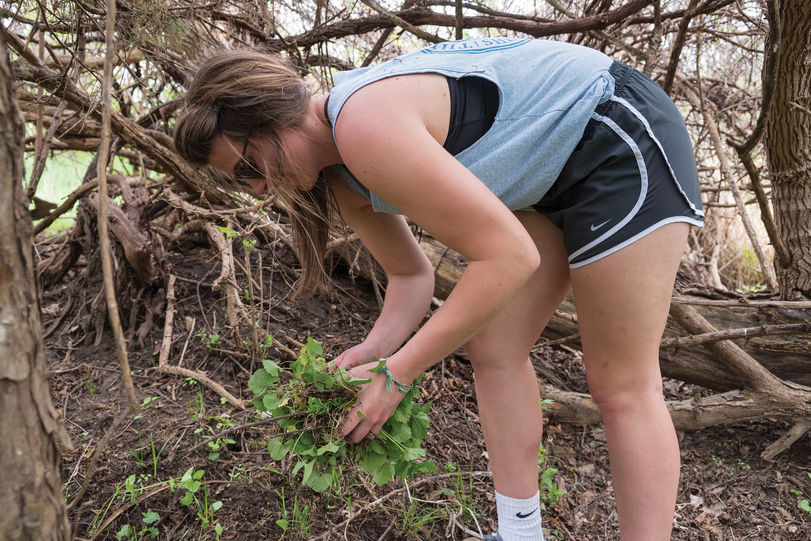Invasive Plants
About
Invasive plants like garlic mustard may look harmless enough but they change the food web in the ecosystem by destroying or replacing the natural food sources. Once established, the invading species may not provide enough food value for wildlife. Without proper nutrition, both the wildlife and landscape are altered. Two invasive plants, garlic mustard and autumn olive threaten this area of Nebraska. For autumn olive, Turkey Creek Preserve has hired outside contractors to cut down destructive patches of growth while garlic mustard is pulled from the earth, one plant at a time.
Garlic Mustard Plants
UNO students and volunteers assemble at TCP to remove invasive garlic mustard plants from the ground. At the weeding session, the first order of business includes plant identification and information.
Plant by plant, volunteers yank and pull the garlic mustard plant from the ground.
With each mustard plant removed, space returns for native plant growth. Pulled plants are collected and destroyed.

In Susan J. Tweit’s essay, “Weeding Yellowstone,” Minding Nature, she explains why invasive plant eradication is not a small thing, but an important one. It’s done … “in order to restore the integrity of the wild community, to heal and nurture relationships formed over eons, interconnections that sustain the health of the whole planet; to counter the damage caused by species that can be dangerous, disrupting and harming the whole landscape.”
For Donnie Poast, Preserve Assistant, Turkey Creek Preserve remains his concern throughout the seasons, tracking and controlling invasive species as part of TCP’s commitment to the native plants grown here.





